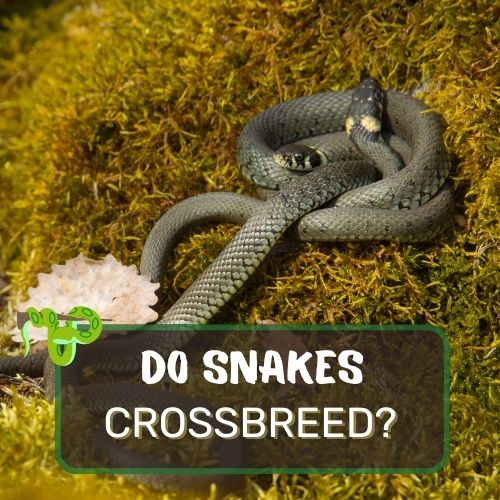
In this article, we explore the intriguing question: “Do snakes crossbreed?”
We delve into the possibilities, limitations, and controversies surrounding snake crossbreeding. Discover the factors that determine crossbreeding ability, genetic compatibility, and ecological implications.
Learn about real-life examples of successful snake hybrids, their characteristics, and the challenges faced in the breeding process.
We discuss the ethical considerations, potential health risks, and legal regulations associated with this captivating phenomenon.
Whether you’re a herpetology enthusiast or simply curious about the wonders of nature, this article offers a comprehensive analysis of snake crossbreeding, shedding light on the complex world of genetics and evolution in these remarkable reptiles.
Table of Contents
- 1 Can Snakes Crossbreed?
- 2 Crossbreeding in Snakes: Possibilities and Limitations
- 3 Snake Hybrids: Examples and Case Studies
- 4 Challenges and Controversies of Snake Crossbreeding
- 5 Methods and Techniques of Snake Crossbreeding
- 6 Breeding Boas and Pythons: Possibilities and Risks
- 7 Hybrid Snakes and Fertility
- 8 FAQ
- 9 Conclusion
Can Snakes Crossbreed?
Yes, snakes can crossbreed under certain circumstances. While snakes typically reproduce within their own species, there have been instances where different snake species or even genera have successfully mated, resulting in hybrid offspring.
The potential for crossbreeding largely depends on the genetic makeup of the snakes involved and their evolutionary proximity.
Species that are closely related may still have enough genetic compatibility to allow for successful hybridization. In some cases, compatible species may naturally encounter each other in the wild and attempt to mate.
However, it is important to note that not all snakes can crossbreed, and there are limitations and barriers to crossbreeding in snakes.
Some species may not be genetically compatible, hindering the successful fertilization and development of hybrid offspring.
Additionally, geographical isolation and behavioral differences between species can prevent encounters and mating attempts.
While the idea of snake hybrids is fascinating, it is crucial to approach crossbreeding with caution and responsibility, considering the potential impact on the health and well-being of the snakes involved and the conservation implications for their respective species.
Crossbreeding in Snakes: Possibilities and Limitations

The potential for snakes to crossbreed
When it comes to crossbreeding in the snake world, the possibilities are indeed fascinating.
While snakes typically reproduce within their own species, there have been instances where different snake species or even genera have successfully mated, giving rise to intriguing hybrids.
The potential for crossbreeding largely depends on the genetic makeup of the snakes involved and their evolutionary proximity.
In some cases, species that are closely related may still have enough genetic compatibility to produce offspring, albeit with some challenges along the way.
Factors that determine the ability to crossbreed, such as species and genetic compatibility
For snakes to successfully crossbreed, several factors come into play. First and foremost, the species involved must be genetically compatible to allow for successful fertilization.
When species are closely related, they are more likely to share enough genetic similarities to enable hybridization.
Environmental factors also play a crucial role in determining the success of crossbreeding.
Factors such as habitat overlap, seasonal breeding patterns, and mating behaviors can influence the likelihood of different snake species encountering each other and attempting to mate.
Limitations and barriers to crossbreeding
While the idea of snake hybrids may excite our imaginations, it’s essential to recognize that there are limitations and barriers to crossbreeding in snakes.
One of the primary obstacles is the lack of genetic compatibility between certain species. Even if attempted, mating between distantly related snakes may not result in viable offspring.
Additionally, physical differences between species can pose challenges during mating attempts. For example, differences in size or reproductive structures might hinder successful copulation.
Moreover, geographical isolation can prevent encounters between potentially compatible species, further limiting the chances of crossbreeding.
Snake Hybrids: Examples and Case Studies

Overview of different snake hybrids that have been produced
Over the years, several fascinating snake hybrids have been documented, capturing the attention of researchers and snake enthusiasts alike.
These hybrids often exhibit a blend of traits and characteristics from their parent species, making them unique and captivating specimens.
Examples of successful crossbreeding between different species and genera
One notable example of successful crossbreeding is the popular “Calico Ball Python.” This striking hybrid results from the mating of a Ball Python (Python regius) and a Blood Python (Python brongersmai).
The Calico Ball Python displays a beautiful mix of patterns and colors from both parent species, making it highly sought after in the pet trade.
Another intriguing case involves the “Cobra-King Snake Hybrid.” Cobras (Naja sp.) and King Snakes (Lampropeltis sp.) are distinct species, but in captivity, instances of successful hybridization have been reported.
These hybrids possess a unique combination of venomous tendencies from cobras and non-venomous traits from King Snakes.
The characteristics and traits of snake hybrids
Snake hybrids often exhibit a mix of physical characteristics and behaviors from their parent species. In some cases, hybrids may display enhanced traits, such as increased size or distinctive color patterns.
These unique features make them highly appealing to snake enthusiasts and collectors.
However, it’s essential to consider the welfare of these hybrids. Due to their mixed genetic backgrounds, some hybrids may be more susceptible to health issues or have specific care requirements that are different from their purebred counterparts.
While the possibilities are intriguing, there are inherent limitations and challenges that make successful hybridization a rare occurrence in the snake kingdom.
Challenges and Controversies of Snake Crossbreeding

Ethical considerations and debates surrounding snake crossbreeding
Snake crossbreeding raises various ethical questions within the herpetology community and among animal enthusiasts.
Some argue that artificially creating hybrid snakes goes against the natural order and could disrupt delicate ecosystems. They believe that hybridization should be left to nature, without human interference.
Additionally, there are concerns about the potential impact on purebred snake populations.
As more attention is drawn to exotic hybrids, there is a risk of neglecting the conservation efforts needed for maintaining and protecting the integrity of individual snake species.
Potential negative impacts on the health and well-being of hybrid snakes
Creating hybrid snakes can be a complex and delicate process, and there are potential health risks involved.
Mixing genetic material from different species can lead to unexpected health issues in the offspring.
Hybrid snakes might be more susceptible to diseases or suffer from genetic disorders that are not apparent in their parent species.
Moreover, some hybrid snakes may exhibit conflicting behaviors or have unique environmental requirements, making it challenging for snake owners and breeders to provide proper care and enrichment.
Legal regulations and restrictions on crossbreeding snakes
The practice of snake crossbreeding is not without legal implications. Some countries or regions have strict regulations concerning the breeding and trade of hybrid snakes.
These regulations aim to protect both native wildlife and the well-being of exotic species involved in hybridization.
The legal landscape surrounding snake crossbreeding can vary significantly, so it’s essential for breeders and enthusiasts to familiarize themselves with the laws and regulations in their respective regions.
Methods and Techniques of Snake Crossbreeding

The various methods used in snake crossbreeding, such as natural mating and artificial insemination
- Natural Mating:
- Introduction: Two snakes of different species or morphs are introduced into the same enclosure. The environment is crucial, requiring the right temperature, humidity, and hiding spots to encourage mating.
- Behavioral Observation: Breeders monitor for courtship behaviors, such as the male rubbing his chin on the female or intertwining their bodies.
- Separation: After mating, the snakes are often separated to prevent stress or injury.
- Artificial Insemination:
- Sperm Collection: This involves manually stimulating the male to release sperm, which is then collected in a sterile container.
- Insemination Process: The collected sperm is introduced into the female using a catheter or pipette. This method requires precision to ensure the sperm is deposited into the female’s reproductive tract.
- Advantages: Useful for breeding snakes that might be aggressive towards each other or when natural mating isn’t successful. It also allows for more controlled breeding schedules.
The role of breeders and their expertise in creating snake hybrids
Breeders play a pivotal role in the creation of snake hybrids, which are the offspring produced by mating snakes from two different species or subspecies. Here’s an expanded look at their role:
- Genetic Knowledge: Breeders must have a deep understanding of snake genetics to predict the potential outcomes of crossbreeding. This knowledge helps them select specific snakes that can produce desired colorations, patterns, or other traits in their offspring.
- Environmental Control: Successful breeding often requires replicating specific environmental conditions. Breeders adjust factors like temperature, humidity, and light cycles to mimic the natural habitats or seasonal changes that stimulate mating behaviors.
- Health and Well-being: Ensuring the health of both parent snakes is crucial. Healthy snakes are more likely to produce viable offspring. Breeders provide appropriate diets, regular health checks, and preventive care.
- Ethical Considerations: Responsible breeders prioritize the welfare of the snakes. They avoid overbreeding, ensure that hybrids don’t suffer from health issues, and provide proper care throughout the snake’s life.
- Education and Awareness: Breeders often serve as educators, informing potential buyers about the care requirements, behavior, and lifespan of the hybrid snakes. This education ensures that buyers are well-equipped to care for their new pets.
- Conservation Implications: While creating hybrids can be controversial, some breeders argue that it raises awareness about various snake species and their conservation needs.
Breeding Boas and Pythons: Possibilities and Risks

The ability to breed different species of boas and pythons
Boas and pythons are two prominent families of snakes known for their impressive size and unique characteristics. While they belong to separate families, some species within these families share enough genetic similarity to potentially crossbreed.
For instance, boas from the Boa constrictor species have been known to hybridize, resulting in offspring with mixed traits from their parent species.
Similarly, various python species, such as the Ball Python and the Blood Python, have been bred together, creating fascinating and visually striking hybrids.
Breeding closely related species of boas and pythons can present challenges and risks. Hybridization between species that are not evolutionarily compatible may lead to unsuccessful reproduction or the production of sterile offspring.
Additionally, if hybrid offspring do survive, they may be more susceptible to health issues or have compromised fertility.
From an ecological perspective, the intentional breeding of closely related species can raise concerns about potential negative impacts on wild populations, genetic integrity, and the conservation of individual species.
Potential benefits and drawbacks of breeding boas and pythons
The breeding of boas and pythons, whether within their own species or through hybridization, has both potential benefits and drawbacks.
By selectively breeding certain traits, breeders may produce snakes with desirable appearances or behaviors, catering to specific preferences in the pet trade.
However, there is a risk of prioritizing aesthetics over the well-being of the snakes involved. Hybrid snakes might inherit conflicting traits or develop health issues, which could compromise their quality of life.
Responsible breeding practices should prioritize the health and welfare of the snakes over purely cosmetic features.
Hybrid Snakes and Fertility

The fertility of hybrid snakes
Hybrid snakes, resulting from the crossbreeding of two different species, often face fertility issues. One of the most well-known phenomena in hybrid animals is “hybrid sterility.”
This means that while the first generation (F1) of hybrids might be perfectly viable, they may be incapable of producing offspring.
The reason lies in the genetic differences between the parent species. When chromosomes from different species come together, they might not align perfectly during meiosis, the process that produces reproductive cells.
This misalignment can lead to gametes (sperm or eggs) that are non-functional. However, not all hybrid snakes are sterile; some can reproduce, either with pure species or other hybrids, leading to complex genetic lineages.
Factors that may affect the fertility of hybrid snakes
The fertility of hybrid snakes can be influenced by several factors:
- Genetic Compatibility: Differences in chromosome number or structure between parent species can lead to misalignment during meiosis in hybrids, producing non-functional gametes.
- Hybrid Vigor vs. Hybrid Breakdown: While some hybrids exhibit increased vitality (hybrid vigor), others might face reduced fitness (hybrid breakdown), affecting reproductive capabilities.
- Developmental Anomalies: Hybrids might have anatomical or physiological differences that hinder successful mating or egg-laying.
- Behavioral Differences: Hybrids might exhibit behaviors that don’t align with typical mating rituals, affecting their ability to find or attract mates.
- Environmental Factors: Conditions like temperature, diet, and stress can impact the reproductive health of any snake, including hybrids.
FAQ
Can snakes be hybrids?
Yes, some snake species can hybridize, resulting in unique and fascinating hybrids with traits from both parent species.
Can you breed boas and pythons?
Yes, in certain cases, boas and pythons from compatible species can be bred together, resulting in hybrid offspring.
Can you breed blood pythons with ball pythons?
Yes, blood pythons (Python brongersmai) and ball pythons (Python regius) have been bred together, producing hybrid offspring.
Can you breed a king snake and a ball python?
Yes, instances of successful breeding between king snakes (Lampropeltis sp.) and ball pythons (Python regius) have been reported, resulting in hybrid snakes.
Are hybrid snakes fertile?
The fertility of hybrid snakes can vary depending on the species involved and their genetic compatibility. Some hybrid snakes may be fertile and capable of reproducing, while others may have reduced fertility or be sterile.
Conclusion
Recap of the main points discussed in the article
In this comprehensive exploration of snake crossbreeding, we delved into the possibilities, challenges, and controversies surrounding this intriguing phenomenon.
We discussed the potential for snakes to crossbreed, factors that determine crossbreeding ability, and limitations faced in the process.
Examples of successful snake hybrids were highlighted, emphasizing the unique traits and characteristics they exhibit.
We also addressed ethical considerations, potential negative impacts, and legal regulations associated with crossbreeding.
The fertility of hybrid snakes and the future directions of research in this field were examined to shed light on the significance of understanding snake crossbreeding.
Final thoughts on the topic of snake crossbreeding
Snake crossbreeding serves as a captivating intersection of biology, genetics, and herpetology. It allows us to witness nature’s adaptability and explore the intricacies of snake reproduction.
However, responsible practices and considerations are essential to ensure the well-being of both the hybrids and their parent species.




0 Comments